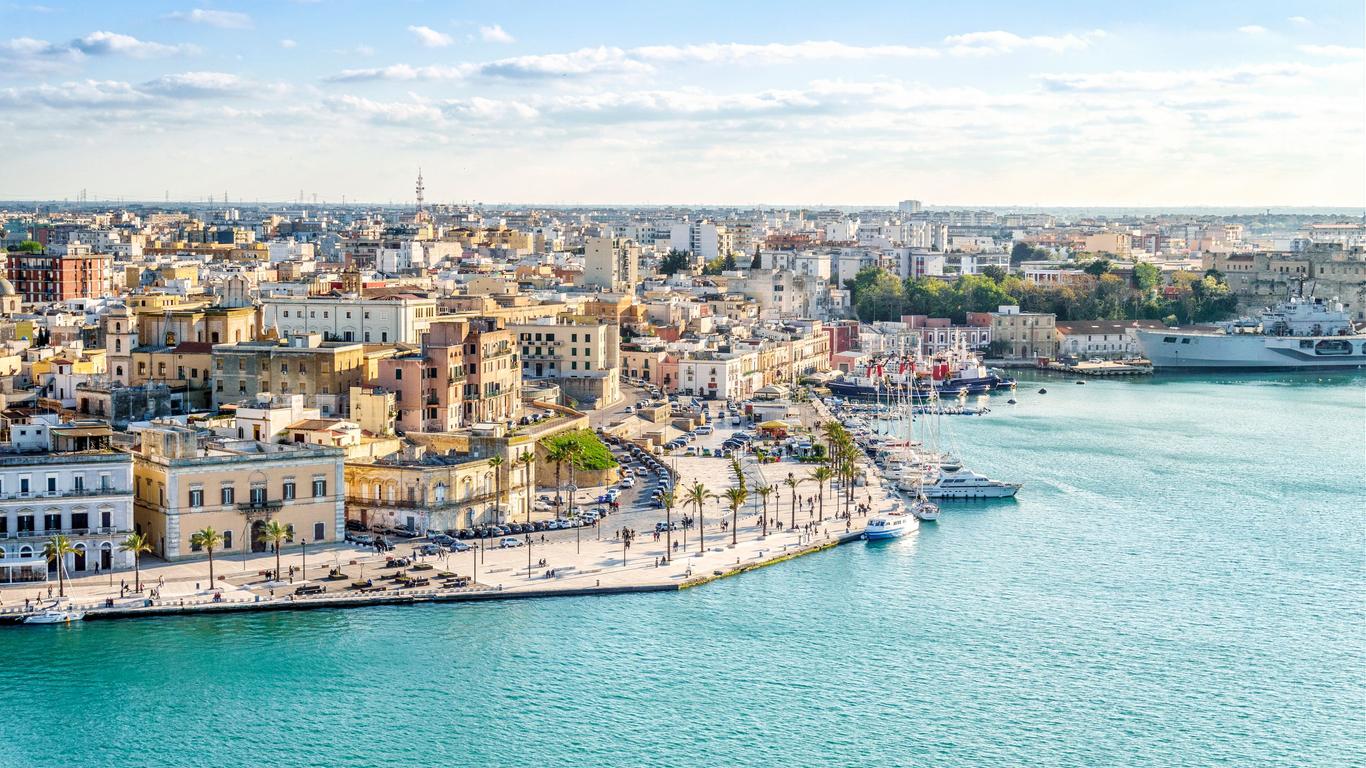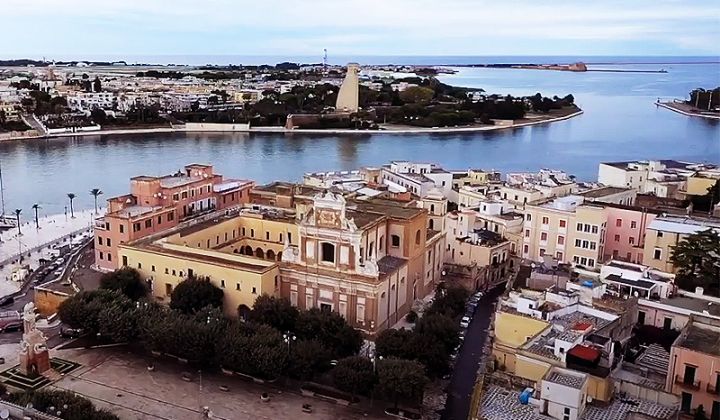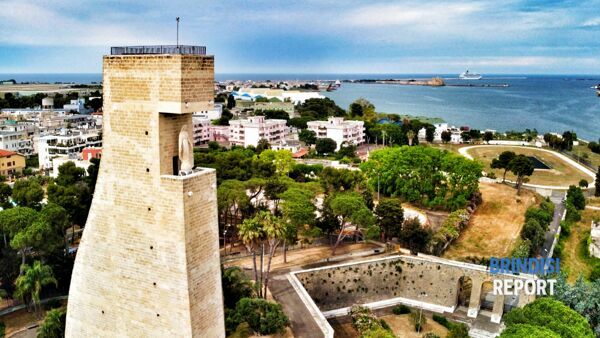



Brindisi is an Apulian port city on the Adriatic.

The Alfonsino Castle in red stone stands on an islet at the entrance to the port.

The imposing Monument to the Italian Sailor in limestone in the shape of a rudder offers views of the sea and the city.

On the other side of the port, the Swabian Castle dates back to the 13th century. At the top of the Virgilian Staircase, on the other hand, the Roman Columns stand out.

An ancient city, gateway to the East, in a crossroads of cultures and peoples, it has experienced a fluctuating history, characterized by golden periods and periods of decline, always in close correlation to its geographical position and the importance of its port.

Origin In the promontory of Punta le Terrare, which is located in the outer port, a village of the Middle Bronze Age (16th century BC) has been identified where a group of huts, protected by an embankment of stones, has returned fragments of Mycenae pottery .

Herodotus himself had spoken of a Mycenaean origin for these populations.

The necropolis of Tor Pisana (south of the current historic center of Brindisi) has returned Proto-Corinthian vases from the first half of the 7th century BC. The Messapian Brindisi certainly maintained intense commercial relations with the opposite Adriatic shore and with the Greek populations of the Aegean: these relations are now documented by numerous archaeological finds while it was in contrast with nearby Taranto.
Brindisi
Address: Piazza Matteotti, 1, 72100
Phone: 0831 229712
Site:
http://www.comune.brindisi.it/hh/index.phpLocation inserted by
BBCC